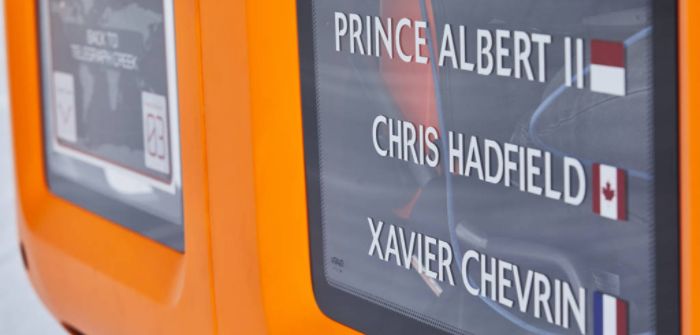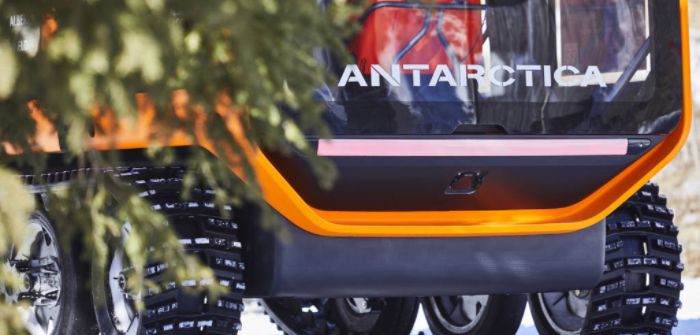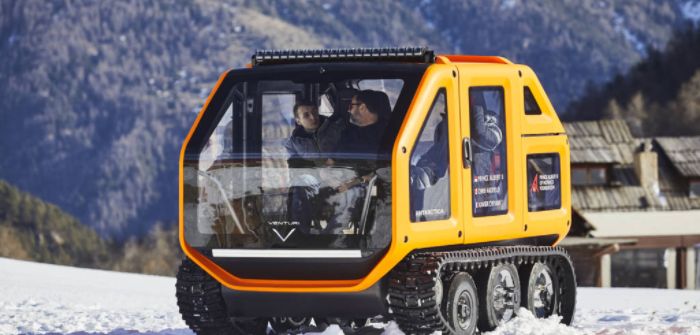Monegasque electromobility company Venturi has carried out the first road tests of its zero emissions electric vehicle Antarctica.
Antarctica, which is being developed to operate in extreme conditions, was tested in the southern France ski resort of Auron, and underwent operational tests in a climate chamber. The Auron tests were Antarctica’s first in real cold weather conditions.
Over three days and four nights, the tests pitted the caterpillar-tracked vehicle against sub-zero temperatures similar to those encountered in the Antarctic. Specialist engineers also checked the onboard installations, battery and engine management, and lighting and de-icing functions, as well as charging and parking the vehicle outside in the cold.
“This is the same team that works on Venturi’s racing cars, so they are very used to working with time constraints and to short deadlines”, explained Nicolas Ollivier, Antarctica developer. “We have to react quickly at every stage of the project, especially during tests on elements identified as requiring optimization.”
Following the tests, the Venturi Antarctica spent three days in a climate chamber in Modena, Italy, where the engineering team checked some of the vehicle’s functions in temperatures below -40°C (-40°F), including the charging system, the antifreeze and de-icing system, the mechanical and electrical opening and closure mechanisms, and the display screen and joystick.
 “We are confident that we have all the technical and human resources needed for the vehicle to function at its best”, explained Valerio Amadio, test prototype manager. “So far, we have been able to respond quickly to any issues that have arisen. We are now focusing on details such as correcting and improving Antarctica’s aesthetics and onboard comfort. The next test phase in Canada will enable us to continue in this positive vein.”
“We are confident that we have all the technical and human resources needed for the vehicle to function at its best”, explained Valerio Amadio, test prototype manager. “So far, we have been able to respond quickly to any issues that have arisen. We are now focusing on details such as correcting and improving Antarctica’s aesthetics and onboard comfort. The next test phase in Canada will enable us to continue in this positive vein.”
During the first week of March, the vehicle will undergo a new phase of tests in the area around Telegraph Creek in British Columbia (Canada), in climatic conditions closer to those that Antarctica will eventually face on a daily basis. A cold snap is expected, which will see temperatures of between -25° and -35°C (-13 to -31°F), similar to the kinds of range seen in the Antarctic. Following the Canadian expedition, the vehicle will be shipped to Antarctica for the culmination of the project.
Gildo Pastor, president of Venturi, said, “The idea for Antarctica originated from a desire to create a zero-emission futuristic vehicle, something close to a robot or a drone. As this vehicle is being built to be used in the most pristine of environments, I wanted the style to be clean and with a non-aggressive aesthetic.”
 Antarctica designer Sacha Lakic said, “The Antarctica is designed like a modern house – clean lines, light and fresh. The main focus of design is the vehicle’s openness to the environment. Antarctica has four openings – two side doors and two windows at the front and the rear. The driver sits alone and has a 180° view of the surroundings.
Antarctica designer Sacha Lakic said, “The Antarctica is designed like a modern house – clean lines, light and fresh. The main focus of design is the vehicle’s openness to the environment. Antarctica has four openings – two side doors and two windows at the front and the rear. The driver sits alone and has a 180° view of the surroundings.
“Antarctica is also an extremely functional vehicle in that it is designed to be easy to construct, use and maintain. Along with promising performance in sub-zero temperatures, it is calibrated to allow two vehicles to be transported one behind the other in standardized containers, making it user friendly and very easy to transport.”


